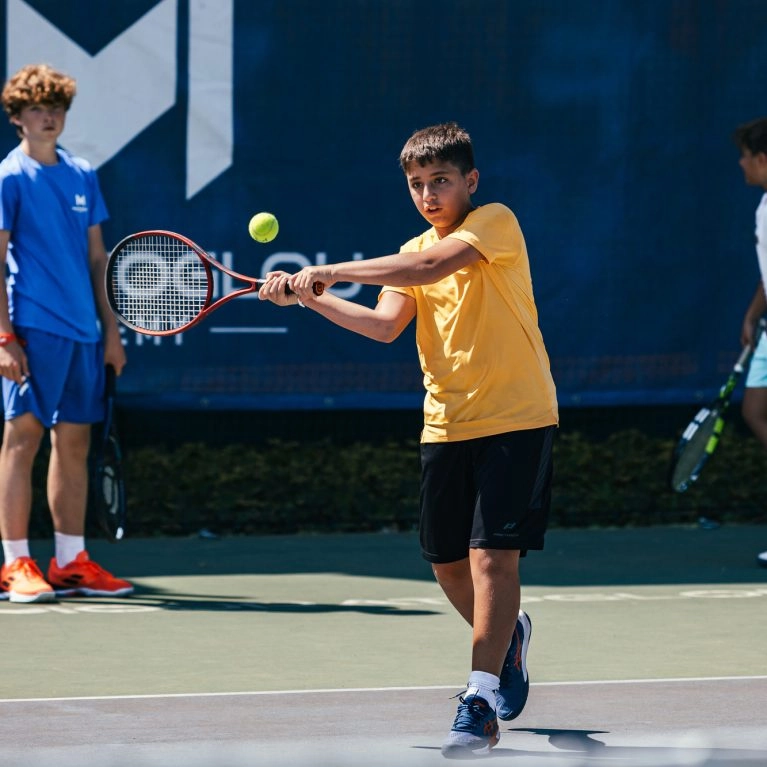1. Increased durability
By using a stronger monofilament string for verticals, players benefit from greater resistance to breakage. Multifilament or gut strings used for traverses provide good comfort without sacrificing durability.

Hybrid tennis strings have become a popular option for many players, from amateurs to professionals. This method combines two types of string, usually a monofilament (often polyester) and a multifilament or natural gut, to maximise the benefits of both materials. This set-up offers an ideal balance between power, comfort, durability and control. These advanced stringing techniques are regularly studied and put into practice in the courses offered by the Mouratoglou Academy, where players perfect every aspect of their equipment. In this article, we’ll explore in detail what a hybrid tennis string is, its benefits, and how best to use it.

This involves using two different types of string for the verticals (uprights) and horizontals (crosspieces). For example, a monofilament (often polyester, which is stiffer and more durable) is used for the uprights to offer greater control and durability, while a multifilament or natural gut is used for the horizontal strings to increase comfort, elasticity and power. This type of customisation is also a key subject in the tennis-study programme at the prestigious Mouratoglou Academy, where students learn to adapt their equipment to maximise their performance. This combination makes it possible to benefit from the best qualities of both types of tennis string and create a personalised solution for each player.
This type of equipment offers an optimum balance between several key factors: power, control, comfort and durability. Here are just some of the reasons why players opt for this hybrid set-up:
Stringing a hybrid tennis racket involves stringing the vertical and horizontal strings with different materials. Here are the key steps to successful stringing:

The choice of tension is essential to get the best feel for your style of play. For a string of this type, it’s common to string the verticals at a higher tension to maintain control, while the crossbows (horizontals) can be strung at a slightly lower tension for greater strength and precision.
There is also another variant called the reverse hybrid, where the vertical strings are made of multifilament or gut, and the horizontal strings are made of monofilament. This type of set-up is less common but can be used by players looking for a softer feel in contact with the ball, while retaining a certain durability.

There are several options for mounting these ropes. Here are some popular combinations:
They increase the lifespan of the rope by using a resistant material such as polyester on verticals, which are often the first to break. The multifilament or gut used on traverses is more flexible, which improves handling while extending the lifespan of the rope.
Where would you like to go?
France
Mouratoglou Academy, Biot, French Riviera, France

NORTH AMERICA
LATIN AMERICA
EUROPE
ASIA
MIDDLE-EAST & AFRICA
Who would you like to contact?
FRANCE
Mouratoglou Academy, Biot, French Riviera, FRANCE

NORTH AMERICA
LATIN AMERICA
EUROPE
ASIA
MIDDLE EAST & AFRICA